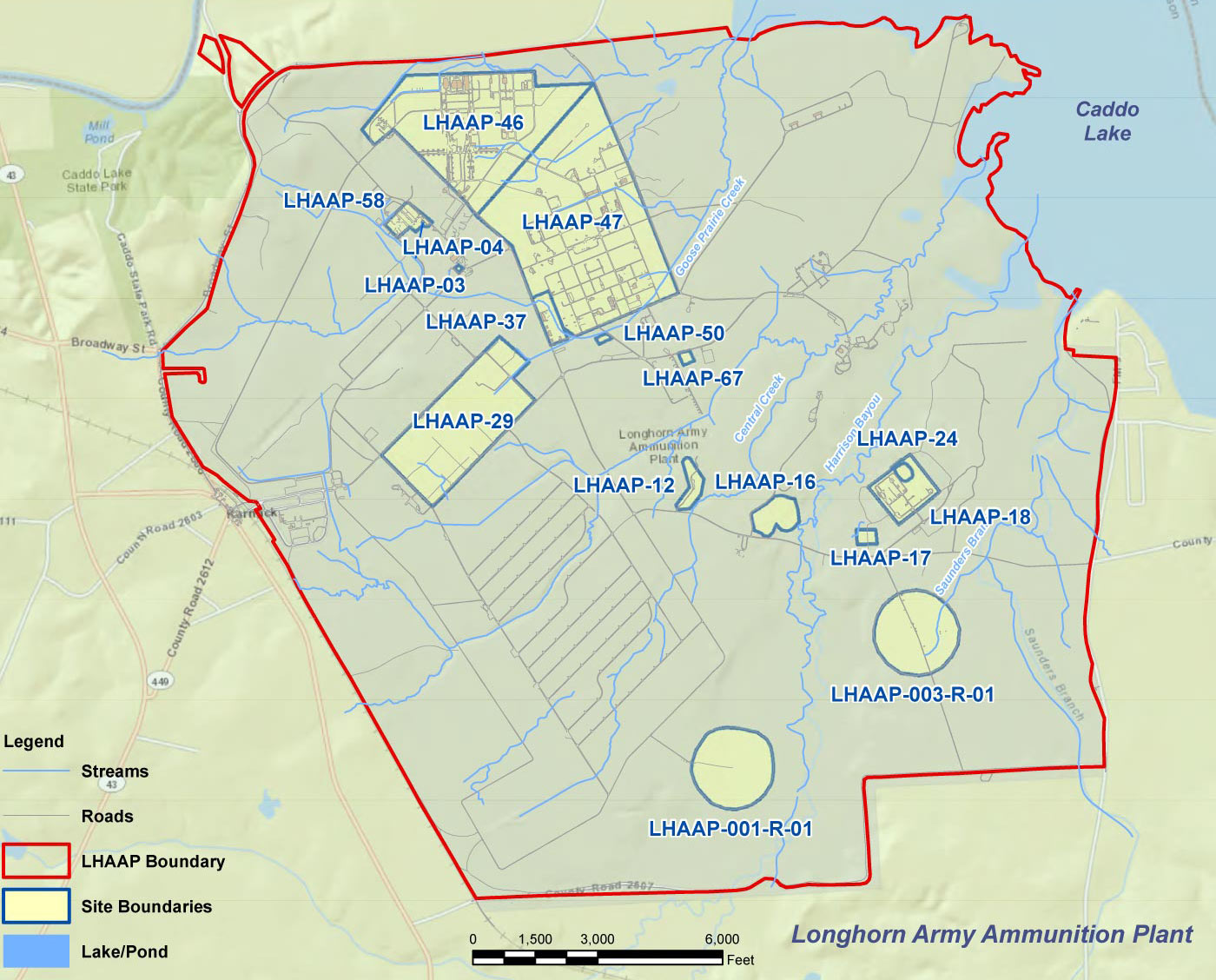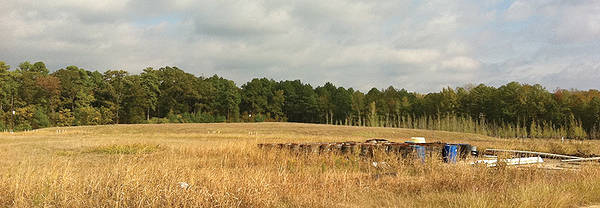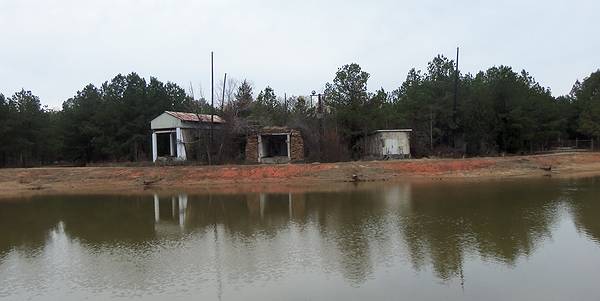Longhorn Army Ammunition Plant
Environmental Restoration Program
LHAAP-18/24
Site Description/History
LHAAP-18/24 is a fenced, cleared area consisting of 34.5 acres in the southeastern section of LHAAP. The area had been used for the treatment, storage, and disposal of solid and liquid explosive, pyrotechnic, and combustible solvent waste by open burning/open detonation, incineration, evaporation, and burial. Burning Ground No. 3 ( LHAAP-18) operated between 1955 and 1998. The Unlined Evaporation Pond ( UEP) ( LHAAP-24) was constructed at the burning ground in 1963 as a holding pond to store explosive wastes resulting from the washout of rocket motor casings. In 1973, the pond also began receiving wastewater containing solvent residues and solids. An Air Curtain Destructor was built in 1979 for the purpose of disposing of explosive and explosive-contaminated wastes by burning. Use of burn pit and trenches was reportedly discontinued in 1984, and the use of the UEP was discontinued in 1984 when it was discovered that the pond was contaminating groundwater beneath the site. The UEP was closed as a Resource Conservation and Recovery Act interim status surface impoundment in 1986 by removing all waste and capping the impoundment. The last burning cage was removed in 1998.
Remedial Activities
As part of the LHAAP-18/24 Interim Remedial Action ( IRA), approximately 32,000 cubic yards of soil were excavated and treated by low temperature thermal desorption. A groundwater extraction system incorporating approximately 5,000 feet of interceptor trenches and a groundwater treatment plant was installed in 1997 to control the migration of contaminated groundwater. This treatment system is still operating.
Sampling specific to LHAAP-18/24 was conducted by the U.S. Army Environmental Hygiene Agency from 1980 to 1987. Following those initial investigations was a multiphase Remedial Investigation ( RI). Additional investigations were performed through 2008. A limited source assessment was conducted in August 2011 and additional investigation in 2013 and 2014 to refine the Conceptual Site Model. The majority of impacts to the soil (i.e., source areas) were removed in the 1997 IRA where approximately 32,000 cubic yards of soil were removed. Currently, groundwater at LHAAP-18/24 is monitored semi-annually, associated with operation of the existing groundwater extraction and treatment system.
The Final ROD was finalized in February 2020 with a selected remedy of enhanced groundwater extraction and treatment, Land Use Controls ( LUCs), enhanced in-situ bioremediation ( EISB) for Shallow Zone and Wilcox formation groundwater inside and outside the containment area, thermal dense non-aqueous phase liquid (DNAPL) removal, maintenance of the existing cap over the UEP, unsaturated soil excavation and off-site disposal, Monitored Natural Attenuation ( MNA) and long term monitoring. A Pre-Design Investigation is currently underway to refine extent of VOC and perchlorate contamination within the southwest quadrant of the site and to the northeast outside of the site boundary.
Contaminants of Concern
Discharge limits, not COCs, include metals, VOCs, perchlorate and 1,4-dioxane.
VOCs (MC, TCE, cis-1,2-DCE, PCE, benzene, 1,1,2-TCA, vinyl chloride, bromodichloromethane, 1,3,5-TNB, and 1,4-dioxane), metals (arsenic, barium, chromium, cobalt, and nickel), and perchlorate in Shallow Zone Groundwater.
VOCs (MC, TCE, cis-1,2-DCE, PCE, benzene, vinyl chloride, bromodichloromethane, 1,3,5-TNB, and 1,4-dioxane), metals (arsenic and barium), and perchlorate in Wilcox Formation Groundwater.
VOCs (TCE, MC, PCE) and perchlorate in Soil.
Current Phase
The site is currently in IRA phase, consisting of groundwater treatment plant monitoring, maintenance and operation, anticipated to continue until RIP is achieved. The Remedial Design ( RD) phase is underway. Five-Year Reviews of the interim remedy are ongoing.
Future Phase
Future planned phase to complete remedy implementation is Remedial Action Construction ( RAC).


